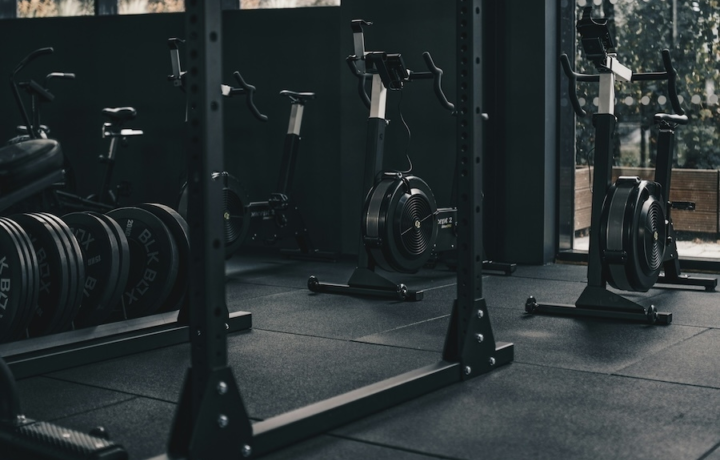Exercise
Dumbbell Front Raise

Dumbbell Front Raise
How to Perform
- Stand with feet shoulder-width apart, holding a dumbbell in each hand in front of your thighs with palms facing your body.
- Engage your core and maintain a neutral spine position, keeping your shoulders down and away from your ears.
- Inhale and brace your abdominals as you prepare for the movement, ensuring your wrists remain in a neutral position.
- While maintaining a slight bend in your elbows (about 5-10 degrees), exhale and raise the weights directly in front of you until your arms are parallel to the floor.
- Pause briefly at the top position, ensuring your shoulders remain depressed and your neck relaxed.
- Inhale as you slowly lower the weights back to the starting position, maintaining control throughout the descent.
- Keep your upper body still throughout the exercise, avoiding the tendency to use momentum by swinging or leaning backward.
- Repeat for the prescribed number of repetitions, maintaining the same controlled tempo for each rep.
Important information
- Make sure your elbows stay slightly bent throughout the entire movement to reduce stress on the shoulder joints.
- Keep your wrists neutral and firm, avoiding any flexion that would place strain on the forearm muscles.
- Only raise the weights to shoulder height, as going higher shifts the workload away from the targeted front deltoids and increases risk of impingement.
- If you feel pain in your shoulders rather than muscle fatigue, decrease the weight or check your form before continuing.

Dumbbell Front Raise
Exercise Details
Primary Muscles
Muscle Groups
Mechanic
Risk Areas
Built for progress
Take the guesswork out of training
Create personalized AI-powered workout plans that evolve with you. Train smarter, track every rep and keep moving forward, one workout at a time.






The dumbbell front raise stands as a cornerstone movement for anyone serious about building impressive, well-defined shoulders. This intermediate-level exercise primarily targets the anterior (front) deltoids while also engaging the medial (side) deltoids as secondary muscles. What makes this movement particularly valuable is its versatility within both bodybuilding routines and as part of a comprehensive warm-up sequence.
When incorporated into a bodybuilding regimen, the front raise isolates the deltoid heads with remarkable precision, allowing for the sculpting of that coveted shoulder cap that creates the illusion of a broader upper body. The beauty of this exercise lies in its simplicity—using nothing more than a pair of dumbbells, you can effectively stimulate muscle growth in one of the most visible muscle groups.
Many lifters appreciate the front raise for its strength-building capabilities. While not typically loaded with extremely heavy weights, the exercise builds functional shoulder strength that translates to improved performance in pressing movements like bench press and overhead press. The controlled nature of the movement allows for the development of stabilizing muscles that support heavier compound lifts.
What separates effective front raises from mediocre ones is tension control. The ability to maintain constant tension throughout the movement while preventing momentum from taking over differentiates those who merely go through the motions from those who truly stimulate muscle growth. The exercise demands mental focus and mind-muscle connection, particularly at the top portion of the movement where the deltoids reach peak contraction.
For optimal results, many experienced lifters incorporate dumbbell front raises into their training splits 1-2 times weekly, using moderate weight that challenges the muscles without compromising form. Whether your goal is bodybuilding aesthetics or functional strength development, this exercise delivers impressive returns when performed consistently with proper technique and appropriate intensity.
FAQ - Dumbbell Front Raise
Dumbbell front raises primarily target the anterior (front) deltoids while also engaging the medial (side) deltoids as secondary muscles. Additionally, your upper traps and serratus anterior act as stabilizers throughout the movement.
Use moderate weights that allow you to maintain perfect form throughout 10-12 controlled repetitions. Most lifters find 5-15 pound dumbbells effective, as this exercise benefits more from proper tension and form than from heavy loading.
Include dumbbell front raises in your shoulder or upper body workouts 1-2 times weekly, allowing 48-72 hours of recovery between sessions. This frequency provides sufficient stimulus for growth while preventing overtraining of the relatively small deltoid muscles.
The three most common mistakes are using momentum by swinging the weights, raising the dumbbells too high (above shoulder level), and allowing the wrists to bend backward. Keep movements controlled, stop at shoulder height, and maintain neutral wrists throughout the exercise.
If you have existing shoulder pain or impingement issues, consult with a healthcare provider before performing front raises. Consider alternatives like incline bench presses or landmine presses that may be less stressful on the shoulder joint while still targeting the front deltoids effectively.







